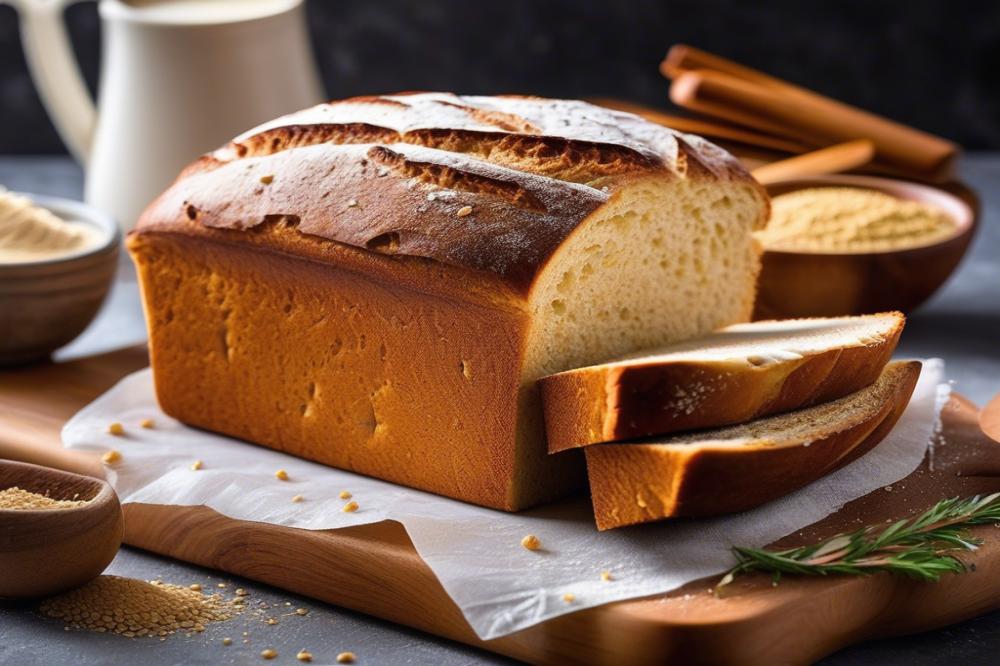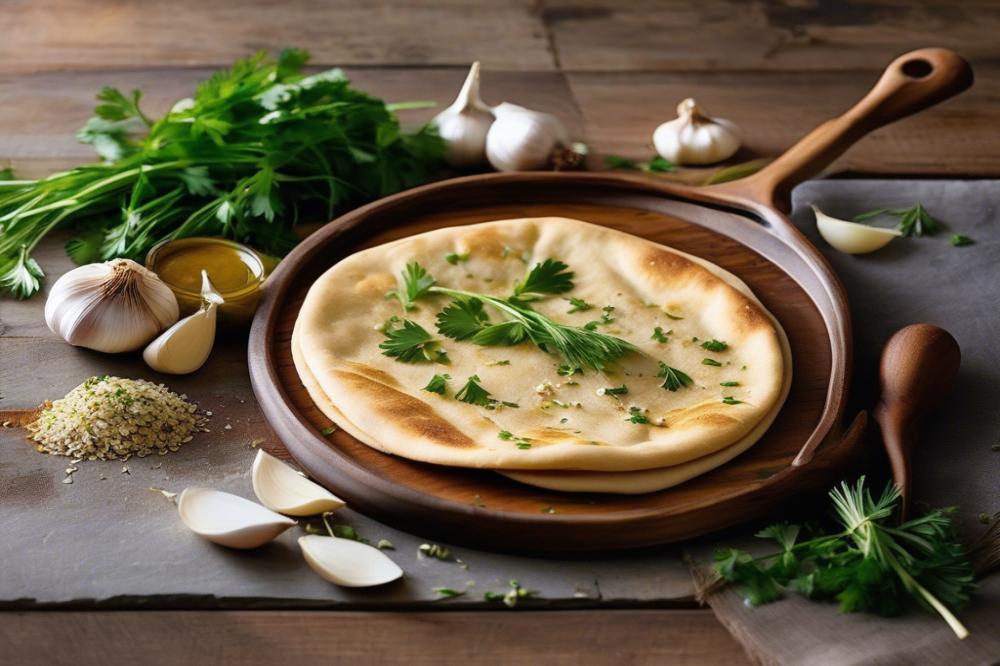Introduction
Lebanese cuisine is a vibrant tapestry of flavors and aromas. Influences from Mediterranean, Arabic, and Western cultures shape its dishes. Fresh ingredients and a variety of spices are hallmarks of this cooking style. Many meals feature vegetables, herbs, and grains, making them both tasty and nutritious. The balance of flavors is truly remarkable, offering rich experiences with every bite.
Tahini, a paste made from ground sesame seeds, holds a special place in Middle Eastern kitchens. It adds a creamy texture and nutty flavor to various dishes. In many recipes, tahini enhances sauces, dips, and spreads. This ingredient is celebrated for its health benefits. Packed with protein, fiber, and healthy fats, tahini is a fantastic choice for those seeking nutritious meals.
A beloved delight in Lebanese cooking is the traditional Tahini Bread. This homemade delight stands out as a vegan and healthy option. baking this bread is simple and can easily be made with accessible ingredients. With its rich flavor and satisfying texture, it complements a wide range of meals. A bread recipe like this one is not just a staple; it embodies the heart of Lebanese culinary tradition.
What is Tahini Bread
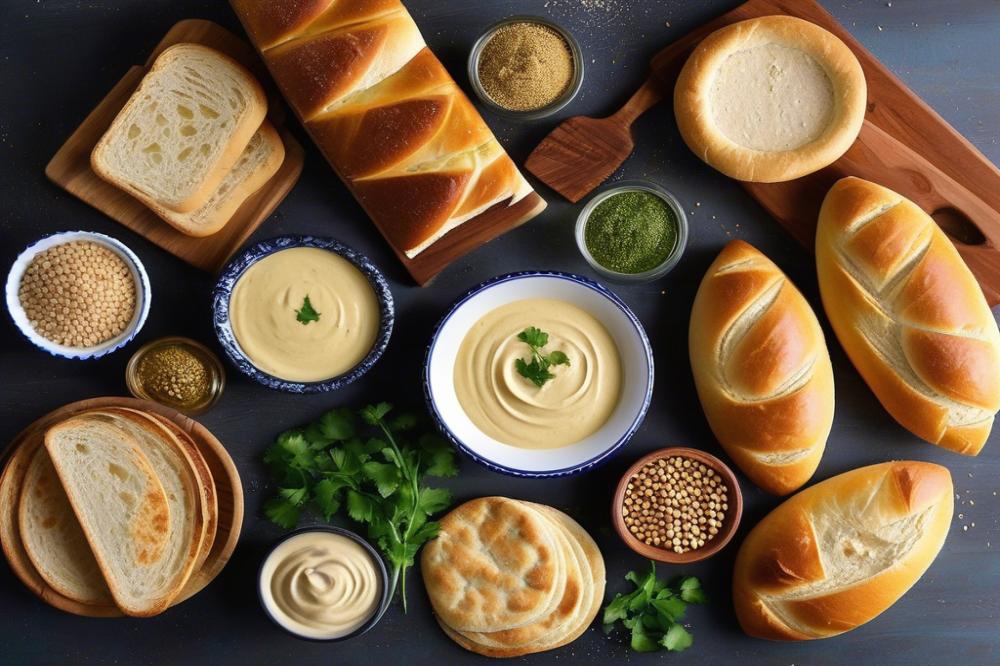
Tahini bread is a delightful Middle Eastern treat known for its rich flavor and soft texture. It is made primarily from tahini, a paste made from ground sesame seeds. This ingredient gives the bread a nutty taste that sets it apart from traditional bread recipes.
Definition and Origins
The origins of tahini bread can be traced back to Lebanon, where it holds a special place in the culinary landscape. Traditionally, bakers combine various flours with tahini to create a dough that is both easy to work with and delicious. It originates from a region renowned for its aromatic spices and fresh ingredients, making this recipe an integral part of their culinary practices.
Cultural Significance
This unique bread plays an important role in Lebanese cuisine. Serving it at family gatherings or festive occasions signifies hospitality and warmth. Furthermore, it pairs well with many dishes, enhancing the flavors of savory stews or fresh salads. For many, enjoying this bread is about sharing experiences and making memories.
Comparison with Other Bread Types
When compared to other types of bread, tahini bread stands out as a vegan option. Many bread recipes rely on dairy or eggs, while this one remains completely plant-based. It is also regarded as a healthy alternative, packed with nutrients from sesame seeds. Regular bread often lacks the distinct flavor that tahini brings to the table. In addition, the homemade version is incredibly easy to prepare, inviting bakers of all skill levels to enjoy a delicious and nutritious experience.
Ingredients and Quantities
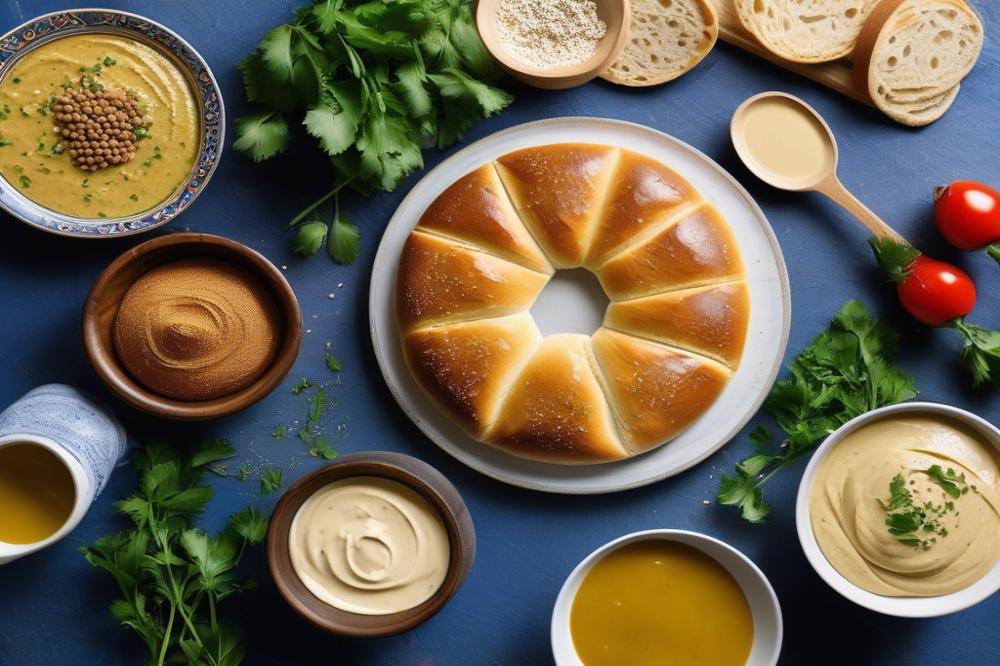
To bake Lebanese tahini bread, gather a few staple ingredients. This recipe showcases a blend of flavors that makes Middle Eastern cuisine so beloved. Here’s what you’ll need:
- 3 cups all-purpose flour
- 1 cup water, warm
- 1/4 cup tahini
- 1 tablespoon sugar
- 2 teaspoons salt
- 2 teaspoons active dry yeast
- 2 tablespoons olive oil
When measuring flour, sift it lightly for best results. Warm water should feel comfortable to the touch, not too hot. Ensure your tahini is smooth, as this affects the texture of the final product. Consider using natural peanut butter as an alternative, but be aware of the flavor change.
This recipe can easily be modified for a healthier option. Whole wheat flour is a great substitute for all-purpose flour. The texture may differ, but it contributes more nutrients. If you’re avoiding sugar, a natural sweetener like maple syrup can work well. However, remember that this may alter the dough’s hydration slightly.
To enhance the flavor, feel free to add herbs or spices. A pinch of cumin or garlic powder will give you a delightful twist. Olive oil can also be replaced with coconut oil for a different essence. This makes the bread recipe vegan-friendly, catering to dietary preferences.
Cooking Instructions
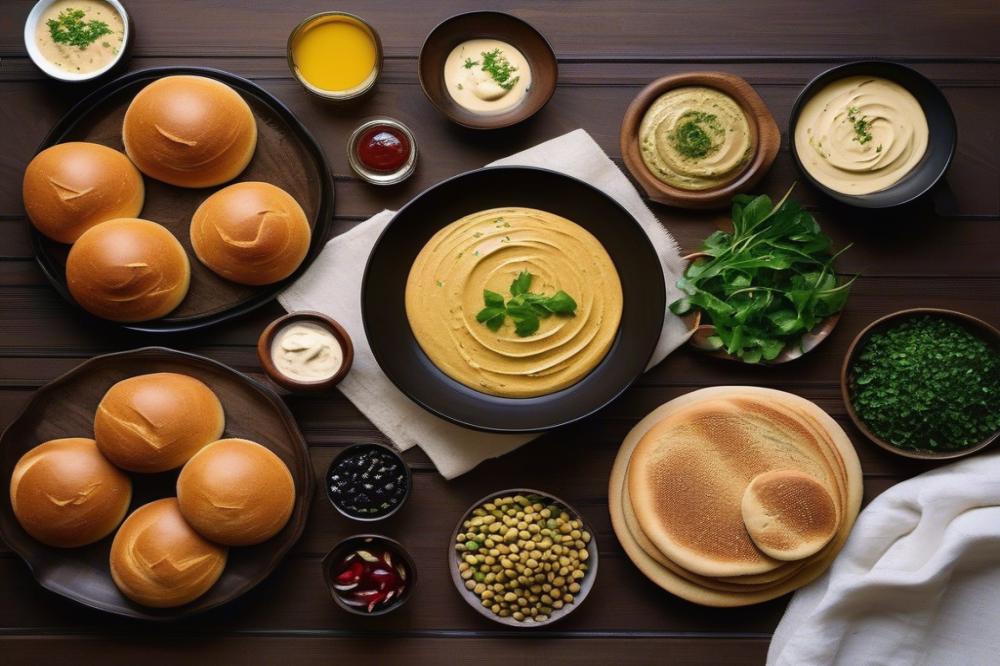
Step-by-step guide on how to bake Tahini Bread
Start by gathering all your ingredients. You will need flour, tahini, water, yeast, salt, and a bit of sugar. Mixing the dry ingredients together is the first task. In a large bowl, combine flour, yeast, salt, and sugar. Then, in another bowl, whisk together tahini and warm water. Gradually add this mixture to the dry ingredients.
Kneading the dough is vital. Once combined, turn the mixture onto a floured surface. Knead for about 10 minutes until smooth. If it feels too sticky, sprinkle a little more flour as you go. After kneading, place the dough in a greased bowl. Cover it with a damp cloth and let it rise in a warm place for about an hour, or until it doubles in size.
Once the dough has risen, carefully punch it down to release any air bubbles. Shape it into a loaf. Next, place the loaf on a baking sheet lined with parchment paper. Cover it again and let it rise for an additional 30 minutes. Preheating the oven is crucial during this time. Set it to 375°F (190°C).
Bake the bread for about 25 to 30 minutes. Look for a golden-brown color on top. To test if it’s done, tap the bottom of the loaf. A hollow sound means it’s ready. Take it out and let it cool on a wire rack before slicing.
Tips for successful baking
Using high-quality tahini enhances flavor. Remember, fresh ingredients make for better bread. If your kitchen is cold, find a warm spot for rising. Also, a little sugar helps activate the yeast if it’s been sitting for a while.
Experiment with toppings. Consider sesame seeds or herbs on top before baking for extra flavor. Checking for doneness is important. If too light, it may not be fully cooked.
Suggestions for storage and serving
Store leftover bread wrapped in plastic wrap or in a breadbox. Keeping it in a cool, dry place will help maintain freshness. If you want to keep it longer, consider freezing it. Slice before freezing for easy use later on.
Serve this bread warm for a delightful experience. Pair it with dips like hummus or baba ghanoush. Enjoying it as part of a Middle Eastern meal adds authenticity. This healthy, vegan bread can also be used for sandwiches. Enjoy different ideas with your homemade creation!
Nutritional Information
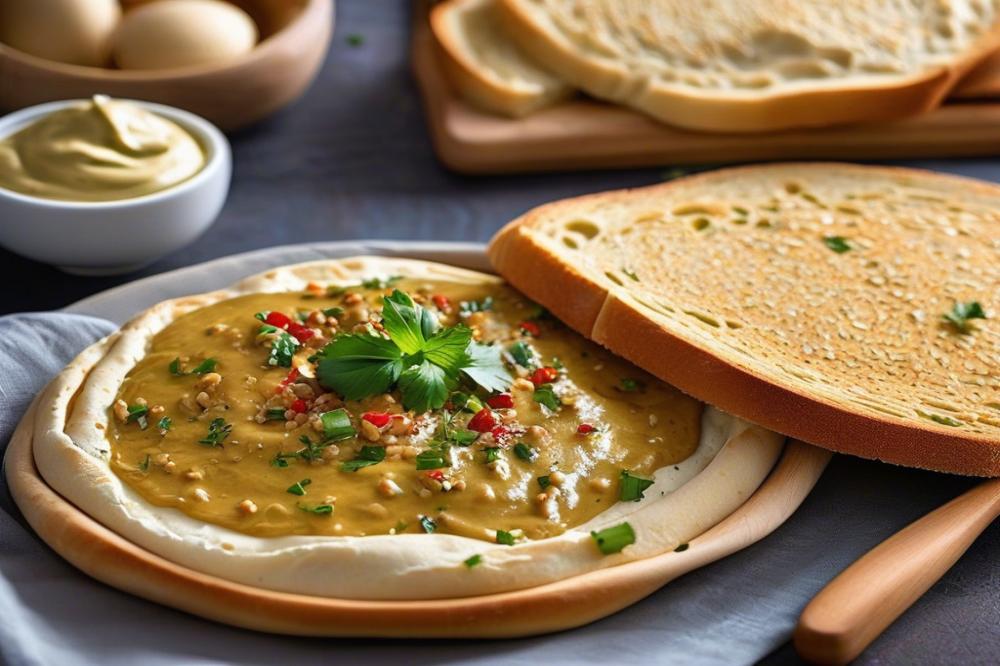
Understanding the benefits of each ingredient can enhance your baking experience. This homemade bread recipe uses simple, wholesome components that together create something delightful. Flour serves as the foundation, providing carbohydrates that give energy. Whole wheat flour adds fiber, promoting good digestion and overall health.
Tahini is the star of this Middle Eastern recipe. Made from ground sesame seeds, it is rich in healthy fats, protein, and vitamins. This ingredient offers numerous health benefits, including potential benefits for heart health due to its high content of unsaturated fats.
Sesame seeds contain antioxidants that may help protect the body from various diseases. They also supply essential minerals like calcium and magnesium, which contribute to strong bones. Additionally, the presence of protein in tahini can help you feel full and satisfied after eating.
Using fresh herbs or spices in this recipe can amplify its nutritious profile. Adding garlic or cumin can increase flavor and may provide health benefits too. Herbs often have anti-inflammatory properties, which further supports overall wellness.
This bread is not only healthy but also completely vegan. It uses no eggs or dairy, making it suitable for those following a plant-based lifestyle. Its straightforward preparation means you can easily bake a nutritious loaf at home without much fuss.
For those concerned about their diet, choosing this easy recipe allows you to control the ingredients. By avoiding excessive sugars and preservatives, you create a healthier option than many store-bought alternatives. Homemade options also tend to taste better, with fresh ingredients that contribute rich flavors.
Ultimately, baking this traditional bread recipe enriches your meals with wholesome goodness while being kind to health. Substituting refined ingredients for whole foods enhances nutritional value. Enjoy the process as you create something both nutritious and delicious!
Serving Suggestions and Pairings
Baking Lebanese tahini bread opens up many tasty possibilities. It’s delicious on its own but is even better when paired with different foods. Try a slice warm from the oven, drizzled with olive oil. This enhances the flavor and adds richness.
Ways to Enjoy Tahini Bread
This healthy homemade bread complements various meals. Using it to scoop up food brings a new twist to your dining experience. It works well as a base for open-faced sandwiches. Imagine layering fresh vegetables on top. The combination of textures and flavors is simply delightful.
Recommended Dips and Spreads
Cultural Pairings with Lebanese Dishes
Embracing the Tradition of Lebanese Tahini Bread
The role of tahini bread in Lebanese cuisine cannot be overstated. This staple offers a blend of flavors and textures that complements many meals. Often served at gatherings, it is a symbol of hospitality, bringing friends and family together. Additionally, this type of bread holds cultural significance, representing the rich heritage of the region.
Trying this recipe can open up an exciting experience in your kitchen. The process of baking not only fills your home with delicious aromas but also gives you the satisfaction of creating something from scratch. Imagine enjoying warm, fluffy bread straight out of the oven. You’ll appreciate each bite even more, knowing you made it yourself.
Homemade bread comes with numerous benefits. It allows you to control the ingredients, making it a healthier option than store-bought varieties. Moreover, it’s a rewarding activity that engages your senses and brings a sense of accomplishment. With practice, you will develop your baking skills, enhancing both your culinary expertise and confidence in the kitchen.
So, gather your ingredients and dive into this delightful journey. Savor the comforting flavors and share the fruits of your labor with loved ones. You might find that this humble bread not only fills your stomach but also warms your heart.

